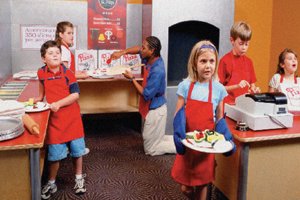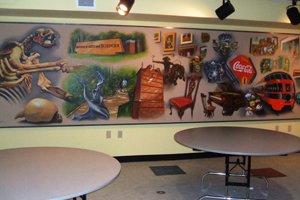On October 11, the space will reopen as a repurposed exhibit area featuring Expedition: Dinosaur, along with the popular Tiny Tots area and Pizza Place.
While the original Children’s Museum is saying goodbye for now, we’re already dreaming big. An all-new, reimagined Children’s Museum experience will make its debut in our future building — and it’s going to be better than ever.
Read the full press release for details.
Located in a separate wing, the Charles and Linda Williams Children's Museum is the only hands-on science center between Jacksonville and Orlando. The 9,300 square-foot addition opened in November 2008.
The Children's Museum is home to interactive exhibits that demonstrate various principles of science, including a race track, doctor and radiologist exhibits, tennis ball launcher, video light microscope, a make-believe pizza parlor, and more!
The exhibits are designed by Hands-On, Inc. an award-winning exhibition design firm with clients from major cities around the world. Primary funding for this project was provided by Charles and Linda Williams, Volusia County ECHO, and community sponsors.
The Children's Museum is designed to be a fun, safe place for children to play with educational exhibits that explore their senses, challenge their minds, and give them the opportunity to learn about science!

Our pepperoni is no phoney baloney! Well actually it is. This exhibit provides a space where our young guests can imagine they are operating a pizza restaurant. They can create soft sculptures of pizza using real pizza pans and peels, bake a pizza in a lighted brick “oven”, ring up the order on a cash register, and serve customers seated at cafe tables. This experience encourages creativity and cooperation while building essential math and life skills.

Local artist and art teacher, Steve Hardock, created a beautiful 5' by 22' mural for the Children's Museum classroom. Children's can take hands-on fun to a new level in guided classes taught by the MOAS education team. This space can also be rented for children's birthday parties.